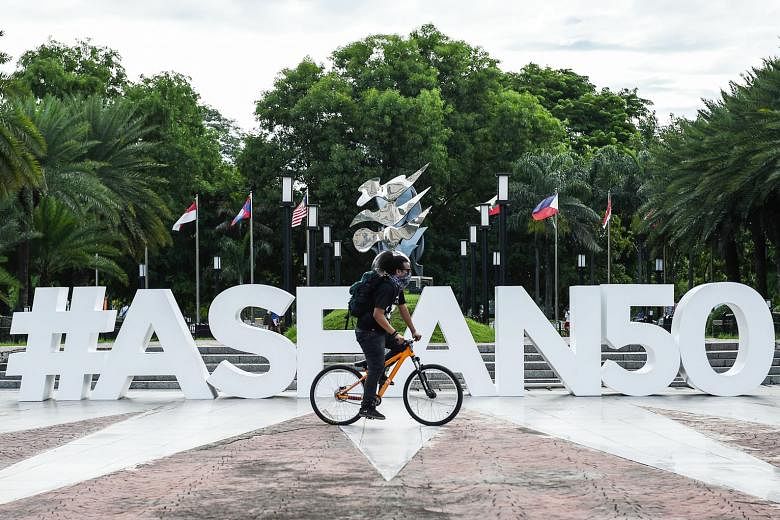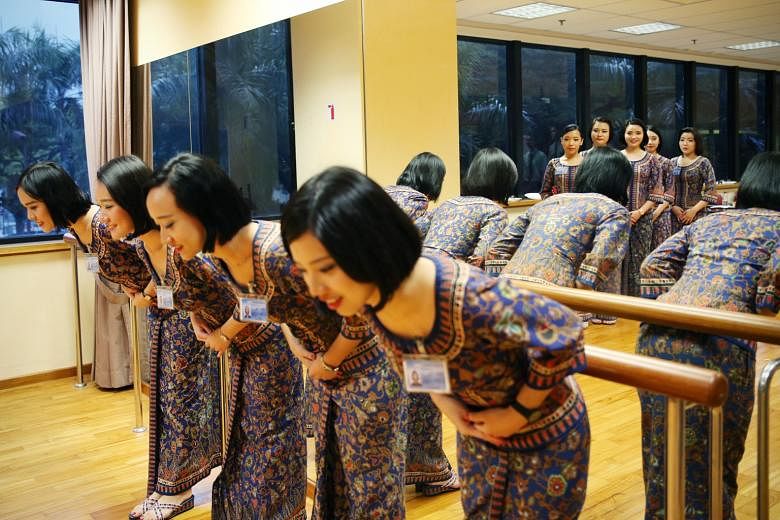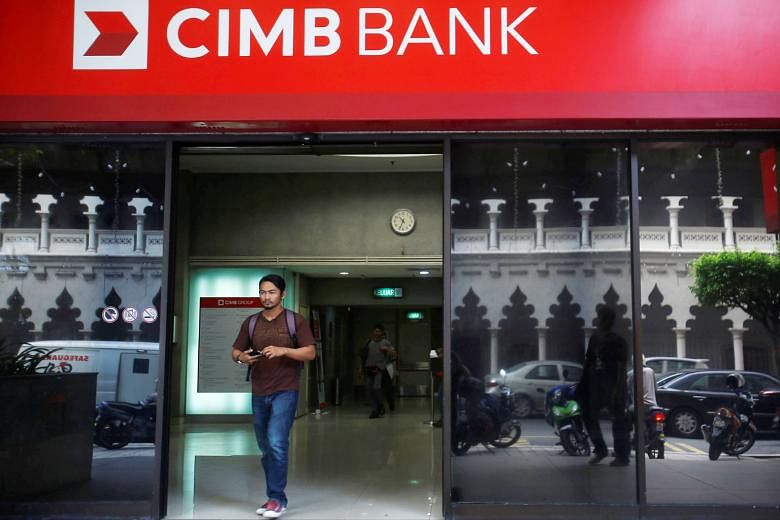Try asking college students in the Asean states where the Appalachian Range and the Visayas mountains are situated. Chances are that, unless you were putting the question to a Filipino, many would probably know of the Appalachians being in the United States but few would be aware of the Visayas in the Philippines. It's a great pity, but that's the reality.
Fifty years after the Association of South-east Asian Nations was founded, no school syllabus in the 10-nation grouping teaches Asean as a subject. The region's aviation sector is booming - Singapore, even as it opens Changi Airport's Terminal 4, is well into the planning of a giant Terminal 5 - but no South-east Asian carrier flies the Asean logo on its tail. The only currency notes in the region exchangeable at par are those of Brunei and Singapore. There is no Asean dispute settlement mechanism, much less a body to enforce the rules.
The Asean Secretariat in Jakarta is a poorly funded body, its total budget only about as much as the combined annual earnings of the chief executive officers of Singapore's three local banks. For years, it has operated from modest, low-rise offices tucked away in the southern corner of the city.
In contrast, the headquarters of the European Union (EU), the body against which Asean is most compared, is a magnificent one.
Yet in April, when the Trump administration sought to reaffirm the US' strategic commitment to Asia, it sent Vice-President Mike Pence to the Asean Secretariat. There, he announced that President Donald Trump would attend three Asia summits in the second half of the year - the Asean-US summit, the East Asia summit in the Philippines and the Asia-Pacific Economic Cooperation summit in Vietnam. An outside power like the US now has a full-time ambassador to Asean. So do Australia, South Korea and several other countries.

Who'd have thought that a body set up at the height of the Cold War to protect Indonesia, the Philippines, Thailand, Malaysia and Singapore from becoming dominoes that could be knocked down by communism, would advance in such a spectacular way? From five members at its founding in 1967 to six in 1984 when Brunei signed on, and eventually 10 as Cambodia, Laos, Vietnam and finally Myanmar, came on board, the group has only expanded. And it's not done growing: Timor Leste could be on board next. While once-role model the EU is straining at the seams, Asean's hemlines are getting broader.
HAILED OUTSIDE THE REGION
Indeed, people from outside the region sometimes tend to see its significance more clearly than those within.

In January, in a major foreign policy speech in Los Angeles, Australian Foreign Minister Julie Bishop declared Asean not only "the geographic centre of the Indo-Pacific (but) also its diplomatic centre". Asean, she went on to say, "has an influence throughout Asia that is not always well-understood".
As the distinguished Singapore diplomat Barry Desker noted this week, Asean's foundational instrument, the Treaty of Amity and Cooperation, now boasts 35 state parties, including all Asean states and major powers.
In some ways, therefore, Asean is like a beehive that sways in the wind, yet is strongly rooted in its own unique fashion. Perhaps it is something to do with the loose confederation that it is, compared with, say, the centralising instinct of the EU.

There also is little question that Asean is far too tolerant of autocratic regimes and prone to look the other way while others are holding their noses, such as when the government of former prime minister Yingluck Shinawatra in Thailand was unseated by the military.
Yet, Asean's surface tolerance often masks the peer pressure that goes on backstage. Witness, for instance, how the Myanmar junta was coaxed into permitting a more democratic dispensation that freed Ms Aung San Suu Kyi from house arrest and to eventual rise as the leader of her nation.
"Asean is like the air you breathe. You will notice only when it is gone," Ms Hoang Thi Ha, a political security expert who spent a decade at the Asean Secretariat, said at a recent forum organised by The Straits Times and the National Library Board.
In fact, there is much more to cheer.
Asean brands , such as Singapore Airlines, Malaysia's CIMB Bank and bananas from the Philippines with Del Monte stickers on them have become visible not only around the region but wider afield.
Powered by the lure of a 630 million-strong market, Asean has become a major manufacturing and investment destination. Indeed, foreign direct investment flows to Asean have outpaced flows to China since 2013. Tourism is booming - one in nine South Koreans, for instance, travels to an Asean destination every year. According to the consultancy firm McKinsey, almost 60 per cent of total Asean growth since 1990 has come from productivity gains.
Still, there's no shared visa policy and economic integration remains a work in progress. Much of what's been gained has been in the low-hanging fruit area. The financial industry's access to each other's markets is limited and so is labour mobility.
That said, as Asean gradually harmonises standards and works towards an evenness of regulatory standards, its allure will eventually accelerate. Sandwiched between China and India - Asia's tectonic plates - and with better demographics than China and higher social indicators than India, the region stands on the cusp of turning its golden anniversary into a golden opportunity.
A NEED TO MOVE FASTER
But there's also no question that it needs to move faster for to stand still would be suicidal. Bigger markets are looming in the neighbourhood. Witness, for instance, how India has begun to soak up foreign direct investment.
Much of that will need to be in economic and security cooperation since political integration is pretty much out of the question. The one thing Asean members abhor most is outside intervention in their internal affairs. Besides, the region is simply too diverse. The addition of Cambodia, Laos, Vietnam and Myanmar not only widened economic disparities, but also opened the way for political differences since the original Asean members were broadly pro-West in character.
Now, new fault lines are emerging, including between overtly pro-China Asean states and more neutral ones. After the widening discomfort over the treatment of majority Buddhist Myanmar's Rohingya Muslims, there's even talk of a Muslim Asean and a non-Muslim Asean.
Adjusting to China's growing power has also brought severe challenges. Unlike the US, whose presence was largely benign, China has shown it can bestow and withdraw privileges - and exact punishment on recalcitrants.
But that dominance could prove temporary once the US gets over its internal distractions and as other powers, such as Japan and India, rise in the region and start to be assertive in their own way or jointly.
That will give Asean states the room they've always sought to manoeuvre between the major powers, or as Ms Hoang puts it, to be "virtuously promiscuous". It is no accident that the EU and Canada are knocking on the doors of the East Asia Summit process and that Nato officials have been showing up regularly for the annual Shangri-La security dialogues in Singapore.
Ultimately, much of Asean's future will depend on the trajectory chosen by Indonesia, its largest member nation. In the initial decades, under president Suharto, Jakarta's reticence about leading from the front helped the smaller states assert themselves in the Asean experiment.
Under Mr Joko Widodo, though, it has got markedly worse. Perhaps it is because there isn't enough bandwidth within Indonesia's foreign policy establishment for this role. Or it could be that Indonesia's inclusion in the Group of 20 forum has given it visions of a game beyond Asean.
Still, visibly if nothing else, Indonesia's Asean profile is set to rise.
A glittering new Asean headquarters building is taking shape in Jakarta and should be ready by 2019 for possible occupation the following year. The way real estate prices have been shooting up in Jakarta's "Asean district" suggests that investors see value in being part of the neighbourhood.
In time, the 16-storey Asean HQ with a helipad on the 17th level will probably host the annual summits and could be as important a physical landmark as the United Nations building in New York, and a place where the good and the great of the world travel to and state their positions. Just as US Vice-President Pence did earlier this year.




